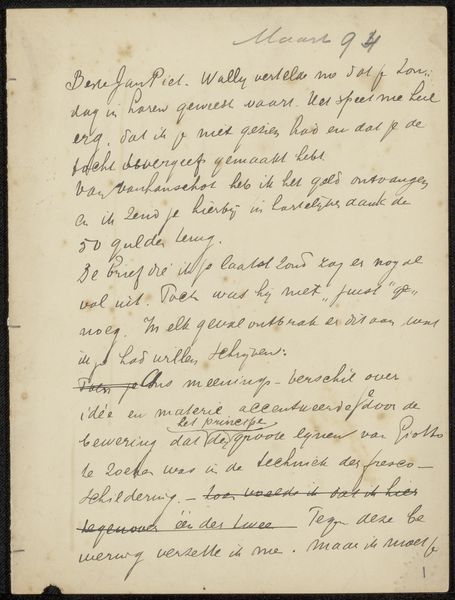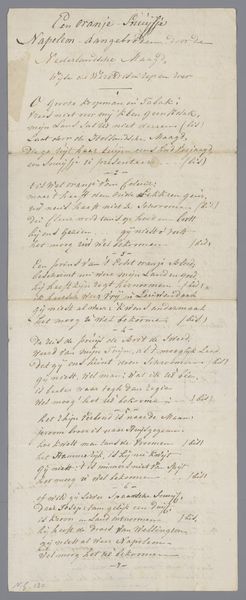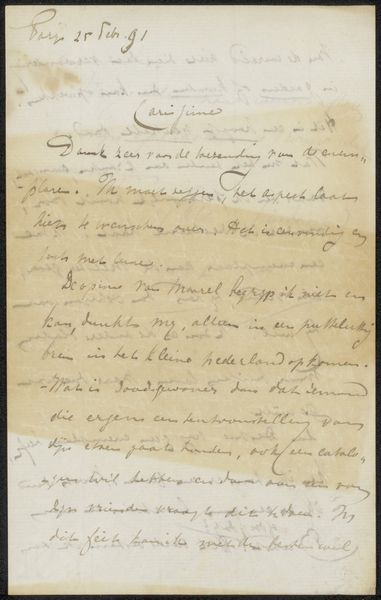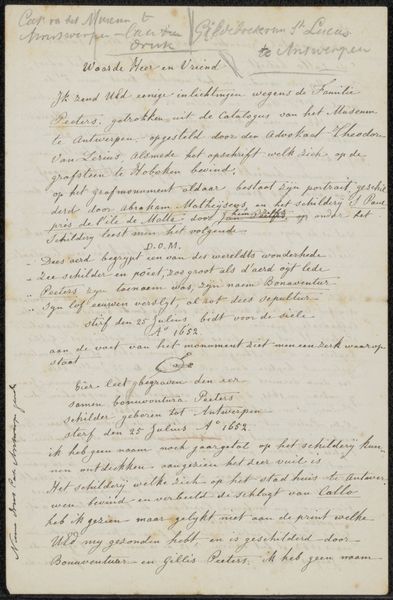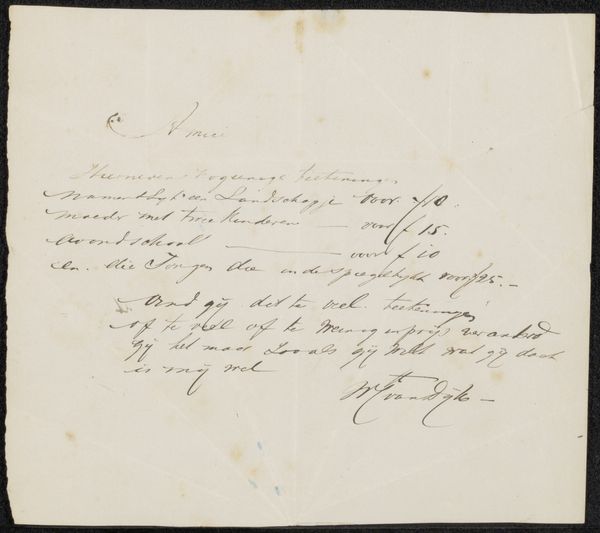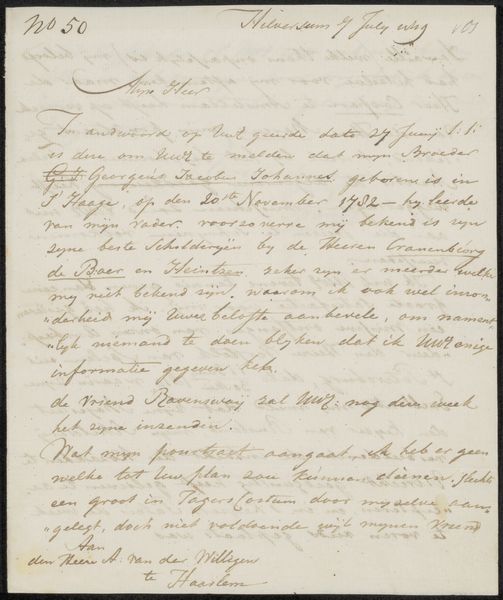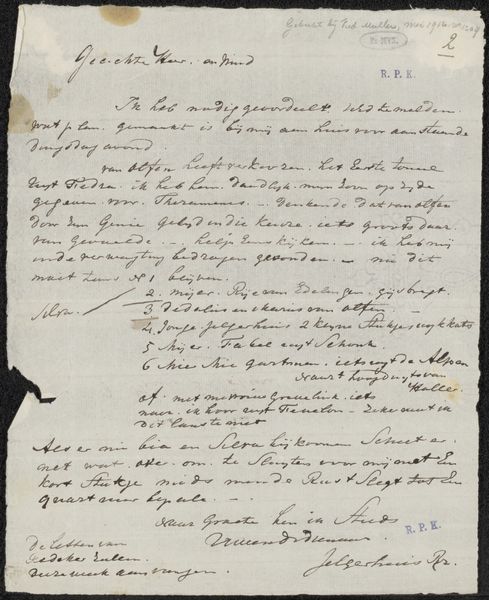
drawing, paper, ink
#
portrait
#
drawing
#
dutch-golden-age
#
paper
#
ink
#
calligraphy
Copyright: Rijks Museum: Open Domain
Curator: Looking at "Brief aan Philip Zilcken," a piece possibly penned between 1901 and 1907 by Wilhelmina J.M. Clasener-van der Maarel, what's your initial take? It's crafted with ink on paper, displaying that wonderful Dutch Golden Age aesthetic mixed with personal touch. Editor: My immediate impression is a sense of intimacy and melancholy. The handwriting, beautiful as it is, speaks to a past era, and the monochromatic palette amplifies this feeling. There is something so beautifully vulnerable about sharing words, thoughts on such aged and brittle paper. Curator: It's intriguing how you picked up on vulnerability. Considering its time, letters were primary modes of communication and cultural production. The very act of letter-writing situated women like Clasener-van der Maarel within particular social frameworks and offered a limited space to assert their presence and voice. Who was Zilcken, and what role might their correspondence have had? These letters were important forms of art. Editor: Absolutely. The role of letter writing can often be underestimated when understanding the impact these forms had on not only politics, and familial ties, but also its use as social and art theory amongst women who were unable to occupy spaces that fostered academic pursuits. I'm curious to understand Zilcken's role as a possible patron. What else can be uncovered when analyzing the impact that these letters had on the patronage that so many women were often unable to pursue? Curator: What I find fascinating is the blend of formal script with a more personal tone. Notice the use of flourishes and careful lettering balanced against the evident speed and urgency of handwriting. This piece also calls into question how art and politics shape individual and collective memory and what remains over time. Editor: Exactly. Those dualities resonate deeply. And perhaps what speaks to me most profoundly is the historical artifact of the paper. Each tear, smudge, crease is representative of the story, lives and political implications that went far beyond a brief note between confidants. I think, now, in contemporary theory we often tend to want to know "what the painting, portrait or letter MEANS!" but rather, we need to accept that its very material implications and continued presence in these walls means something too.
Comments
No comments
Be the first to comment and join the conversation on the ultimate creative platform.
